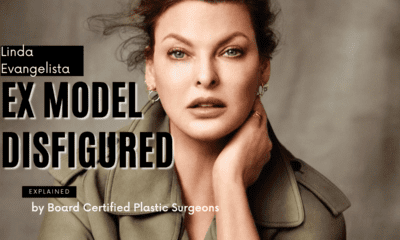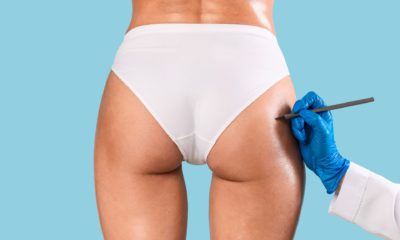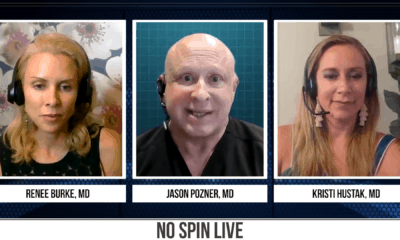The recent announcement by the Therapeutic Goods Administration (TGA), a Division of the Australian Department of Health, to temporarily suspend the sale of eight different textured implants for the next 6 months has sent ripples through the plastic surgery community. The suspension is due to the link between textured implants and breast implant-associated anaplastic large cell lymphoma (BIA-ALCL). The TGA’s goal is to conduct further research and collect data in order to determine whether or not these implants are safe.
Board certified plastic surgeon Dr. William P. Adams Jr. of Dallas, TX hosts fellow breast augmentation experts, Dr. Christine Hamori of Boston, MA, Dr. Richard Restifo of Orange, CT and Dr. Jason Pozner of Boca Raton, FL, to discuss the recall and what patients need to know.
Textured Implants a Bigger Deal in Australia
BIA-ALCL is a real but very rare form of cancer that has been found in women with textured implants. The plastic surgery community has responded by initiating intense, ongoing study to understanding the link between textured implants and ALCL. While the cause of the disease is more complicated than just the type of implant, the data is showing that breast implants with a higher degree of texture are potentially more dangerous. In response, the pharmaceutical company Allergan recently recalled their BIOCELL textured breast implants. It is also why Australia just announced a temporary sale suspension on eight different types of textured implants, comprising 13% of the Australian market, for the next 6 months while they gather data.
What does this mean for breast augmentation patients in the United States? “I think you really can’t compare Australia to the US because they have far more implants approved than we do,” explains Dr. Pozner. Furthermore, countries such as Australia use considerably more textured implants in their breast augmentation surgeries. In the United States, the most highly textured of the textured implants available was Allergan’s now recalled BIOCELL. In Australia, there exist polyurethane and other breast implants with even more texturing than Biocell. “It turns out that the rate of ALCL in some of these more highly textured implants is higher than in the BIOCELL implants,” shares Dr. Pozner.
Smart Move, But It Does Create Confusion
The experts all agree that the TGA’s move was a smart one. Removing these more highly textured options from the market, until they figure out which ones are safe and which ones are not, is the right thing to do. There are plenty of other options available today that will deliver great results without the need for additional risk. That said, Dr. Hamori wonders about the perceptions. “I’m just a little afraid with how the American consumer is going to perceive this stance by Australia,” she says. Many are already confused, thinking that Australia and other countries are taking all textured implants off the market because they are unsafe. This is only partly the truth.
Implants Not the Sole Problem
“The truth is that I think it’s a bad idea to blame everything on the implant because we know that there are more things involved,” explains Dr. Adams. It is important that patients understand that, yes, there are risks involved with textured breast implants, but just because you have a textured device does not mean that you will develop ALCL. Dr. Hamori combats patient confusion by spending time explaining the different types of implants and that ALCL has only been associated with heavily textured implants. She also makes certain that patients understand that the breast implant is only one component of ALCL. There is also:
- genetic predisposition
- bacterial contamination
A patient must have all these factors for ALCL to occur. “I do not use textured implants,” says Dr. Hamori, but she wants her patients to understand the different possibilities and that moving forward with a smooth implant does not incur these risks.
Smooth, Not Textured Breast Implants in the United States
For Dr. Restifo, it all comes down to safety. “It’s a good idea to ensure the safety of these devices and, as a society, we need to be behind the safety first mantra,” he shares. “Personally, I don’t see the need for any textured implants. I’ve hated textured implants for my entire career. ALCL is just one more reason to hate them.” For him, the question is: Do we really need textured implants?
In this country, about 98% of breast implants are smooth, but internationally, the opposite is true. They use about 99% textured implants. However, the fact that ALCL is exclusively associated with textured breast implants, particularly the more highly textured ones, those a part of Australia’s suspension, may cause plastic surgeons in other parts of the world to make the switch. Especially since it is possible to achieve the same results when combating problems such as implant malposition with a smooth implant and a surgical mesh.
Patient Choice
There are physicians who feel strongly about the benefit of anatomic, or “gummy bear,” implants for their patients, all of which are textured. At the end of the day, it is truly a discussion and decision between the surgeon and the individual patient. One important point is that the risk of BIA-ALCL is extremely high, far higher than risks involved in everyday life, including 1000x more rare than female breast cancer. That said, most patients, when informed about the risk, tend to choose the smooth option. “In terms of interaction with the patient, I think all you have to do is say the word textured implant and ALCL in the same sentence and they’re done,” says Dr. Restifo. At the end of the day, it doesn’t matter whether or not the risk is minimal. “If you say zero risk and minor risk, everyone’s going for the zero risk,” explains Dr. Pozner.



















Facebook
Twitter
Instagram
YouTube
RSS